Country
Crash of a Piper PA-31T Cheyenne II off Barcelona
Date & Time:
May 30, 2015 at 1635 LT
Registration:
YV2761
Survivors:
Yes
Schedule:
Charallave – Barcelona
MSN:
31-8120055
YOM:
1981
Crew on board:
1
Crew fatalities:
Pax on board:
3
Pax fatalities:
Other fatalities:
Total fatalities:
0
Circumstances:
Following an uneventful flight from Charallave, the pilot initiated the descent to Barcelona-Jose Antonio Anzoátegui Airport in poor weather conditions. On final, in a flat attitude, the twin engine aircraft impacted the water surface and came to rest some 3,7 km short of runway 15. All four occupants evacuated the cabin and took place in a lifeboat. Slightly injured, they were rescued two hours later. The aircraft sank and was lost.
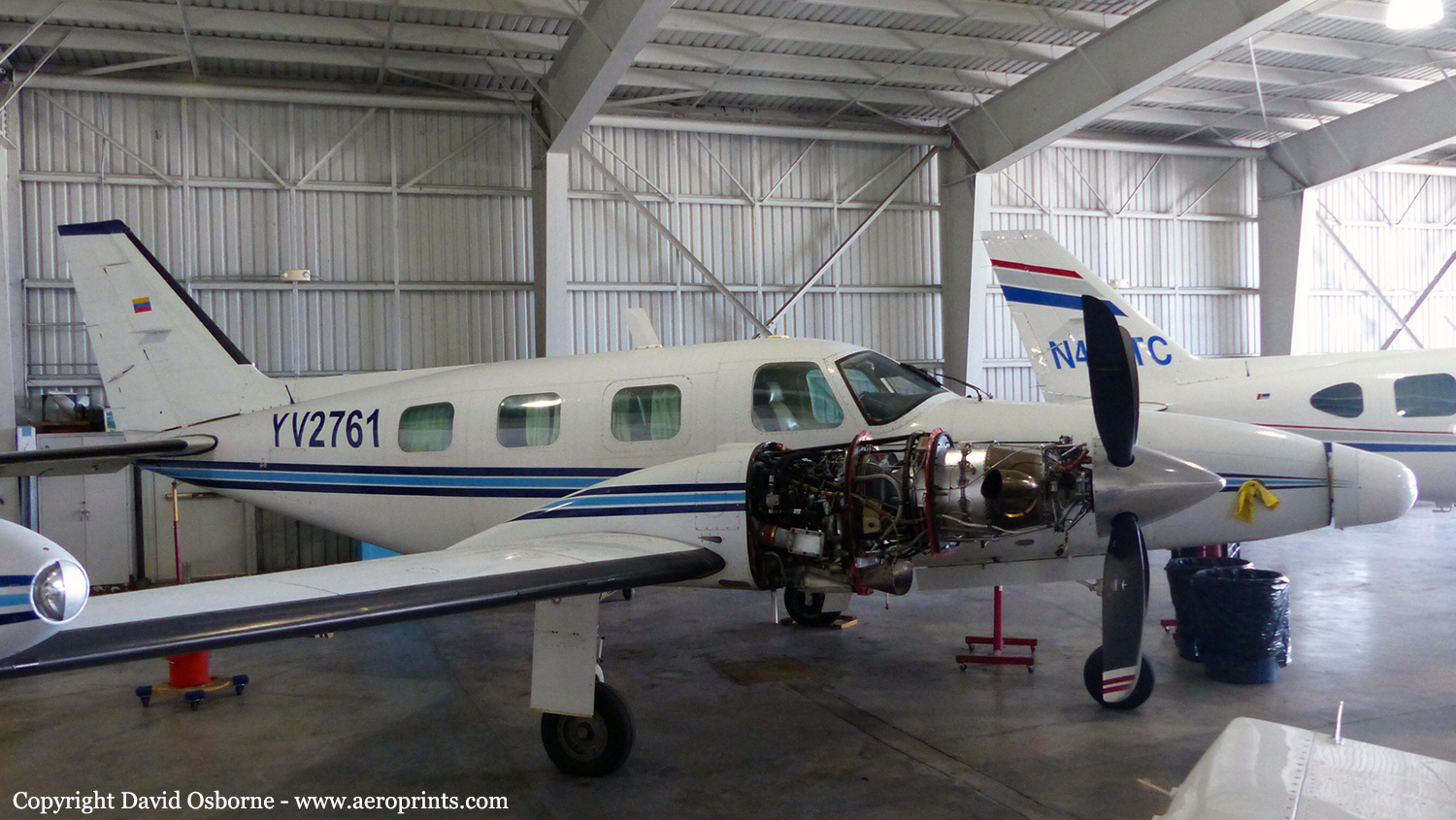
Crash of a Piper PA-31T Cheyenne I in Fort Lauderdale: 4 killed
Date & Time:
Apr 12, 2015 at 1625 LT
Registration:
N119RL
Survivors:
No
Schedule:
Orlando - Fort Lauderdale
MSN:
31T-7904002
YOM:
1979
Crew on board:
1
Crew fatalities:
Pax on board:
3
Pax fatalities:
Other fatalities:
Total fatalities:
4
Aircraft flight hours:
3267
Circumstances:
Following an uneventful personal flight, the pilot contacted the air traffic control tower controller and was immediately cleared to land. About 36 seconds later, the pilot reported "smoke in the cockpit." When asked to repeat, the pilot repeated "smoke in the cockpit." The tower controller cleared the pilot to land on any runway. About 47 seconds after the initial call of smoke, the pilot reported "mayday mayday mayday mayday mayday (unintelligible)." The airplane then crashed about ¼ mile short of the airport in a wooded area and burned. Security video showed the airplane pitch nose-down suddenly just before impact. The video revealed no visible smoke or fire trailing the airplane before ground impact. The pilot reported about 1,221 hours of total flight time on his Federal Aviation Administration first class medical certificate, issued about two months prior to the accident. He completed an initial training course for the airplane make and model 1 week before the accident. The airplane had recently undergone an annual inspection and extensive upgrades to its avionics. Both the left and right engines displayed contact signatures to their internal components characteristic of engines developing significant power at the time of impact, likely in the mid-to-high power range. The engines displayed no indications of any pre-impact anomalies or distress that would have precluded normal engine operation. Both propeller assemblies broke free from the engine during the crash sequence and the blades on both engines revealed signatures consistent with the development of power at impact. The center fuselage and cockpit areas were completely consumed in the postcrash fire. An examination of all remaining wires, wire bundles, switches, terminals, circuit breakers, electrical components, instruments, and avionics did not reveal evidence of precrash thermal distress. However, a small fire just before impact likely would not have had time to create thermal damage that would be discernable after an extensive postcrash fire.
Probable cause:
A rapid onset of smoke and/or fire inflight for reasons that could not be determined due to the postimpact fire and the condition of the wreckage.
Final Report:

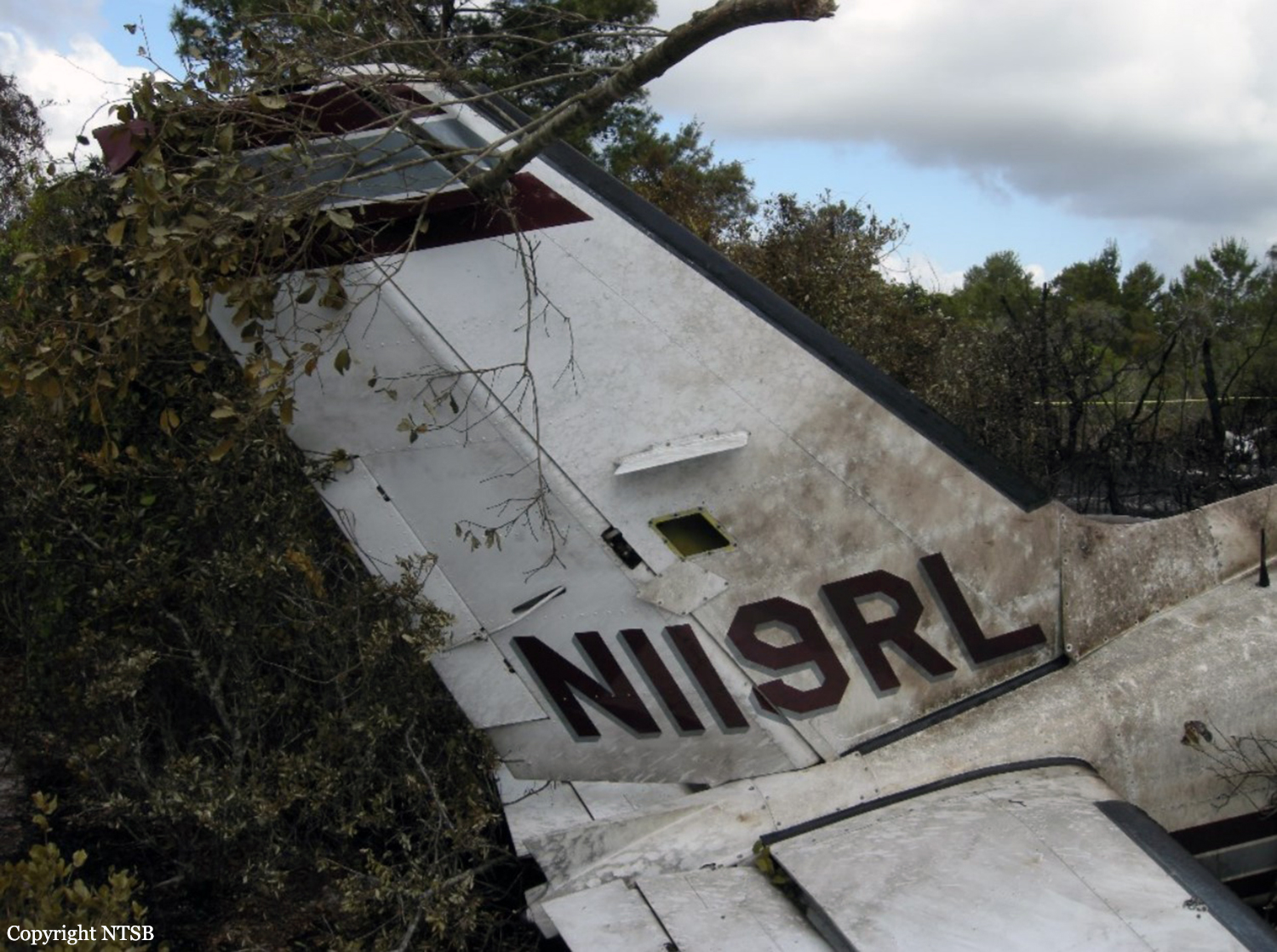


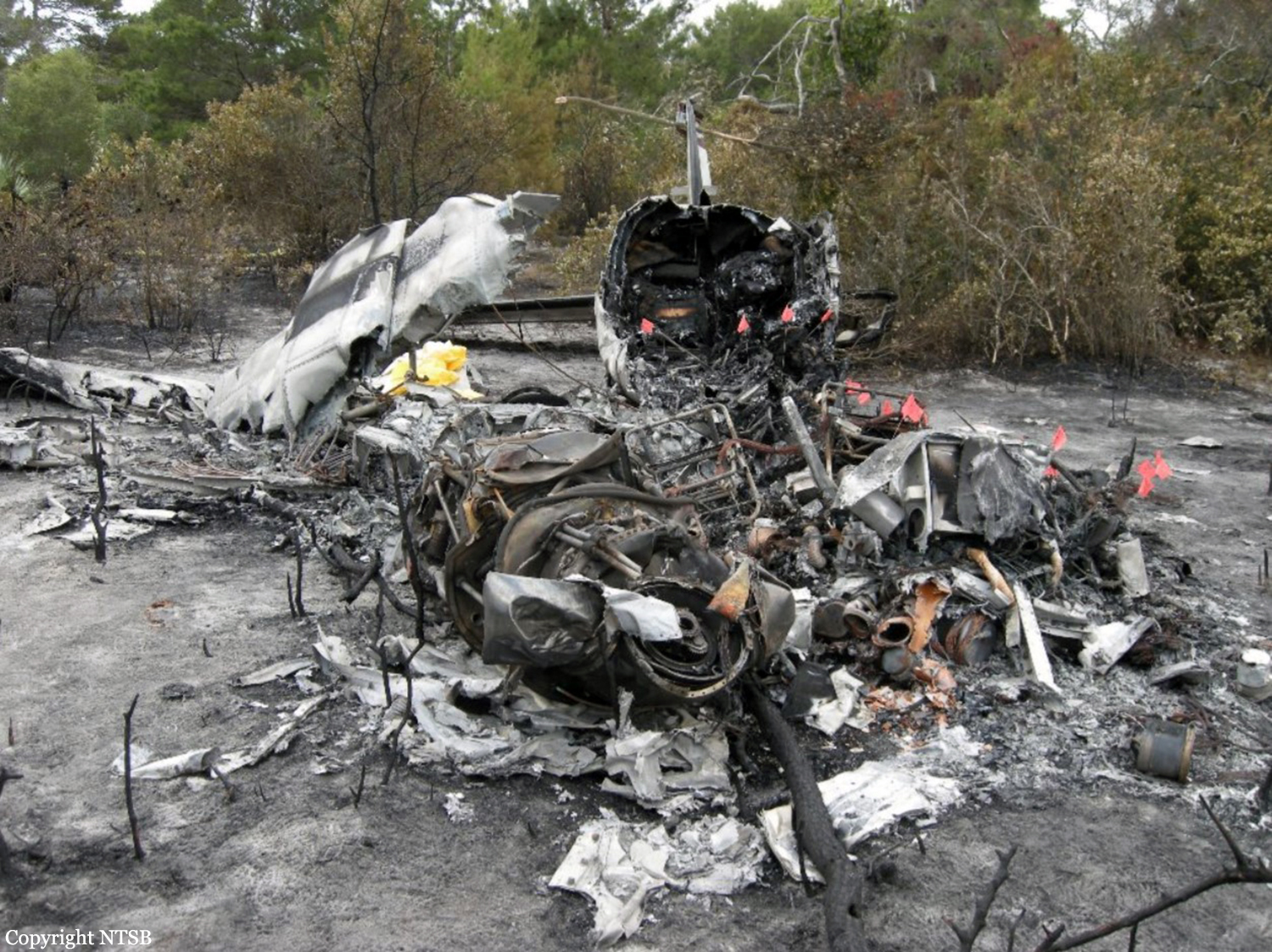

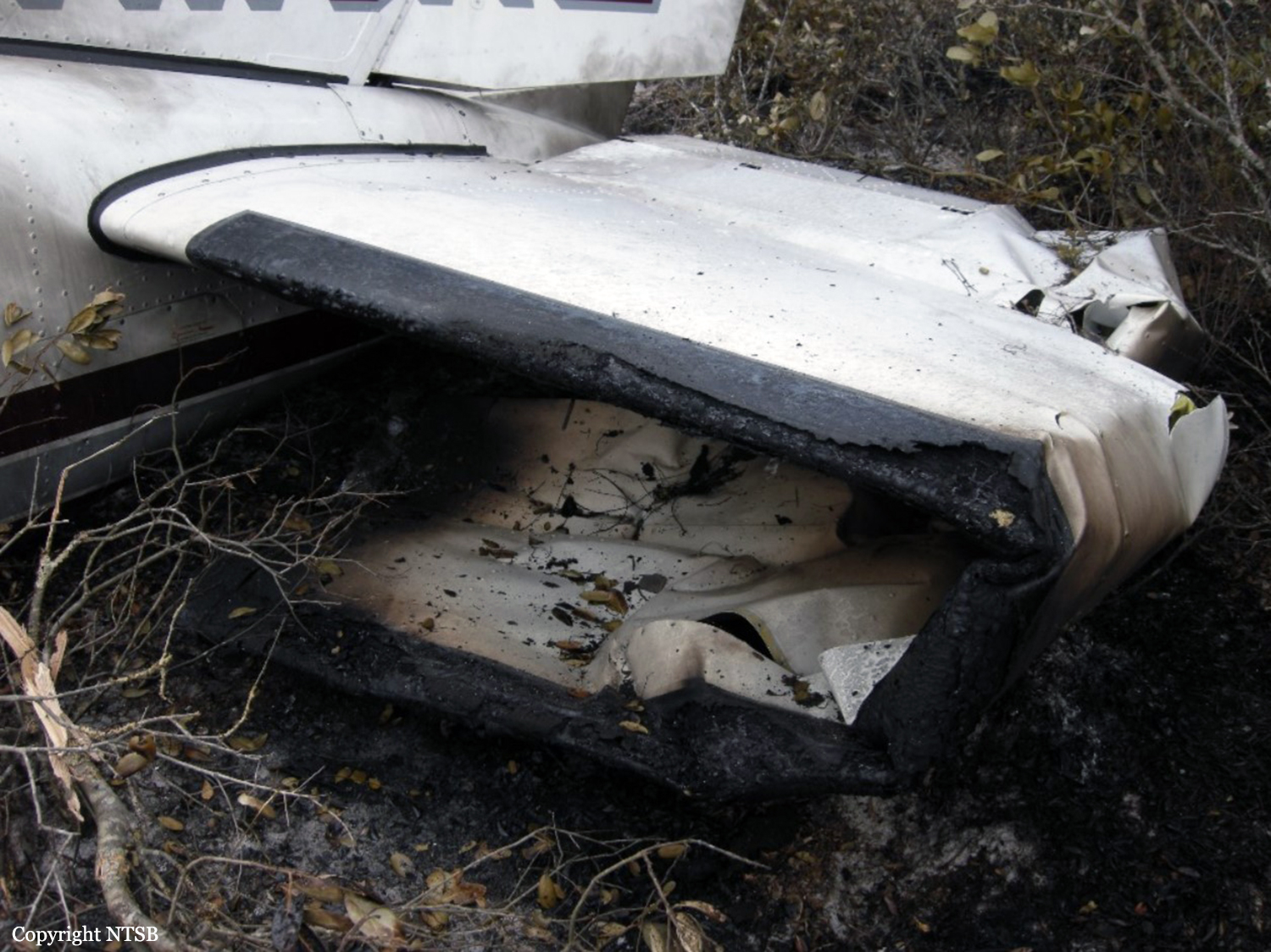
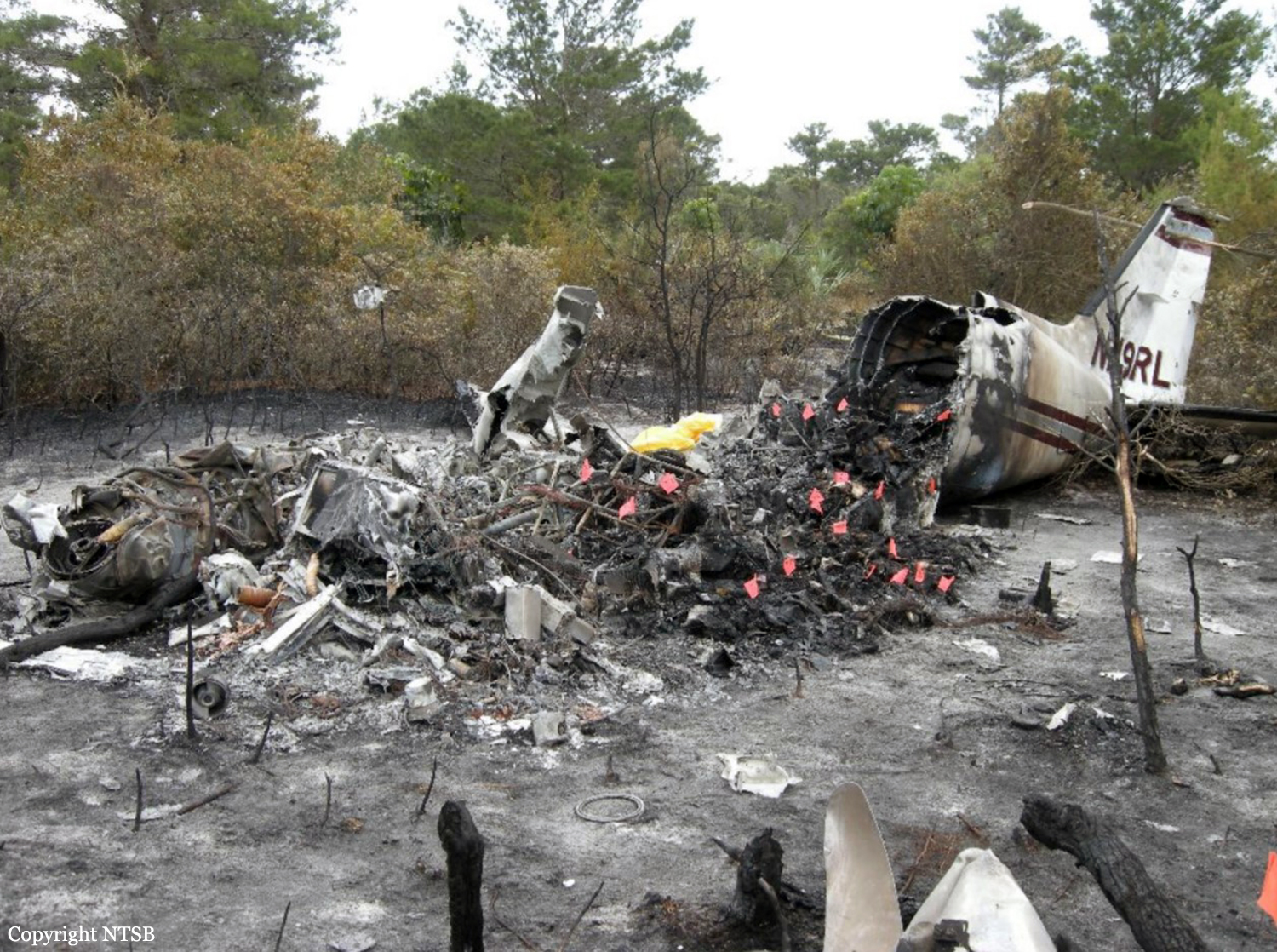
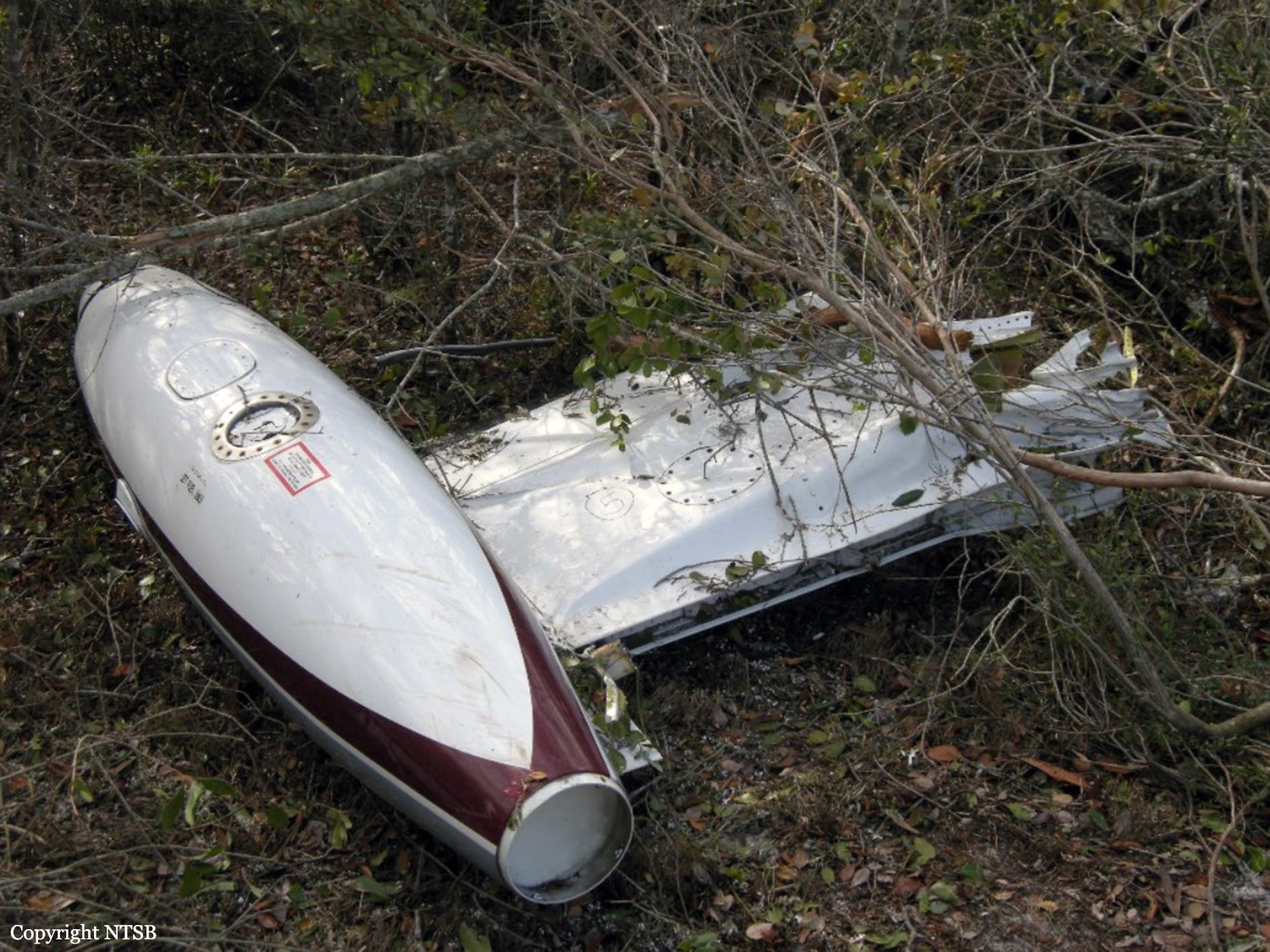

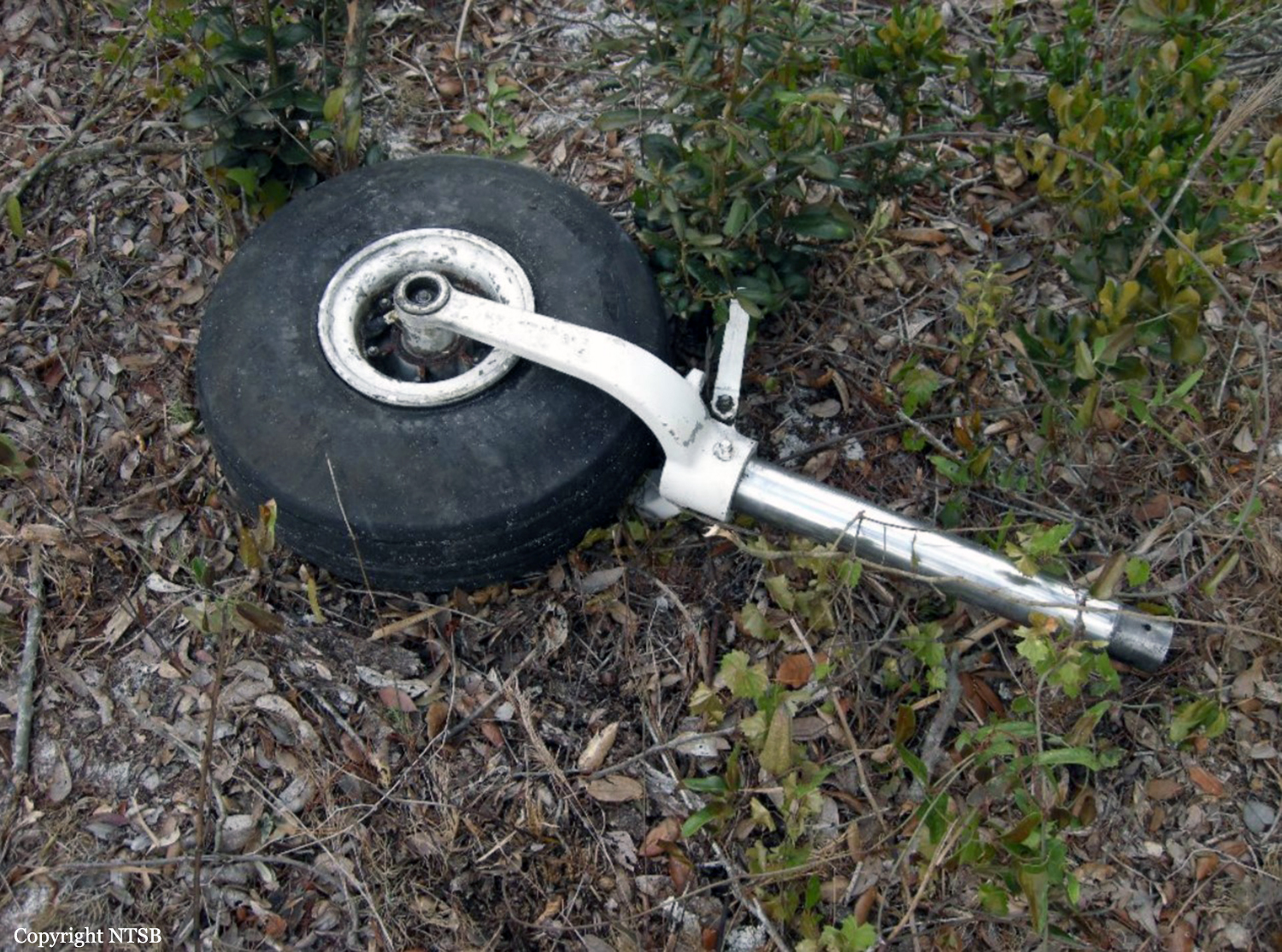
Crash of a Piper PA-31T Cheyenne II in Fort Lauderdale: 3 killed
Date & Time:
Mar 15, 2013 at 1621 LT
Registration:
N63CA
Survivors:
No
Schedule:
Fort Lauderdale - Fort Lauderdale
MSN:
31-7820033
YOM:
1978
Crew on board:
1
Crew fatalities:
Pax on board:
2
Pax fatalities:
Other fatalities:
Total fatalities:
3
Aircraft flight hours:
5006
Circumstances:
The multiengine airplane had not been flown for about 4 months and was being prepared for export. The pilot was attempting a local test flight after avionics upgrades had been performed. Shortly after takeoff, the pilot transmitted that he was experiencing an "emergency"; however, he did not state the nature of the emergency. The airplane was observed experiencing difficulty climbing and entered a right turn back toward the airport. It subsequently stalled, rolled right about 90 degrees, and descended. The airplane impacted several parked vehicles and came to rest inverted. A postcrash fire destroyed the airframe. Both engines were destroyed by fire and impact damage. The left propeller assembly was fire damaged, and the right propeller assembly remained attached to the gearbox, which separated from the engine. Examination of wreckage did not reveal any preimpact malfunctions. It was noted that the left engine displayed more pronounced rotational signatures than the right engine, but this difference could be attributed to the impact sequence. The left propeller assembly displayed evidence of twisting and rotational damage, and the right propeller assembly did not display any significant evidence of twisting or rotational damage indicative of operation with a difference in power. The lack of flight recorders and the condition of the wreckage precluded the gathering of additional relevant information.
Probable cause:
The pilot's failure to maintain airplane control following an emergency, the nature of which could not be determined because of crash and fire damage, which resulted in an aerodynamic stall.
Final Report:

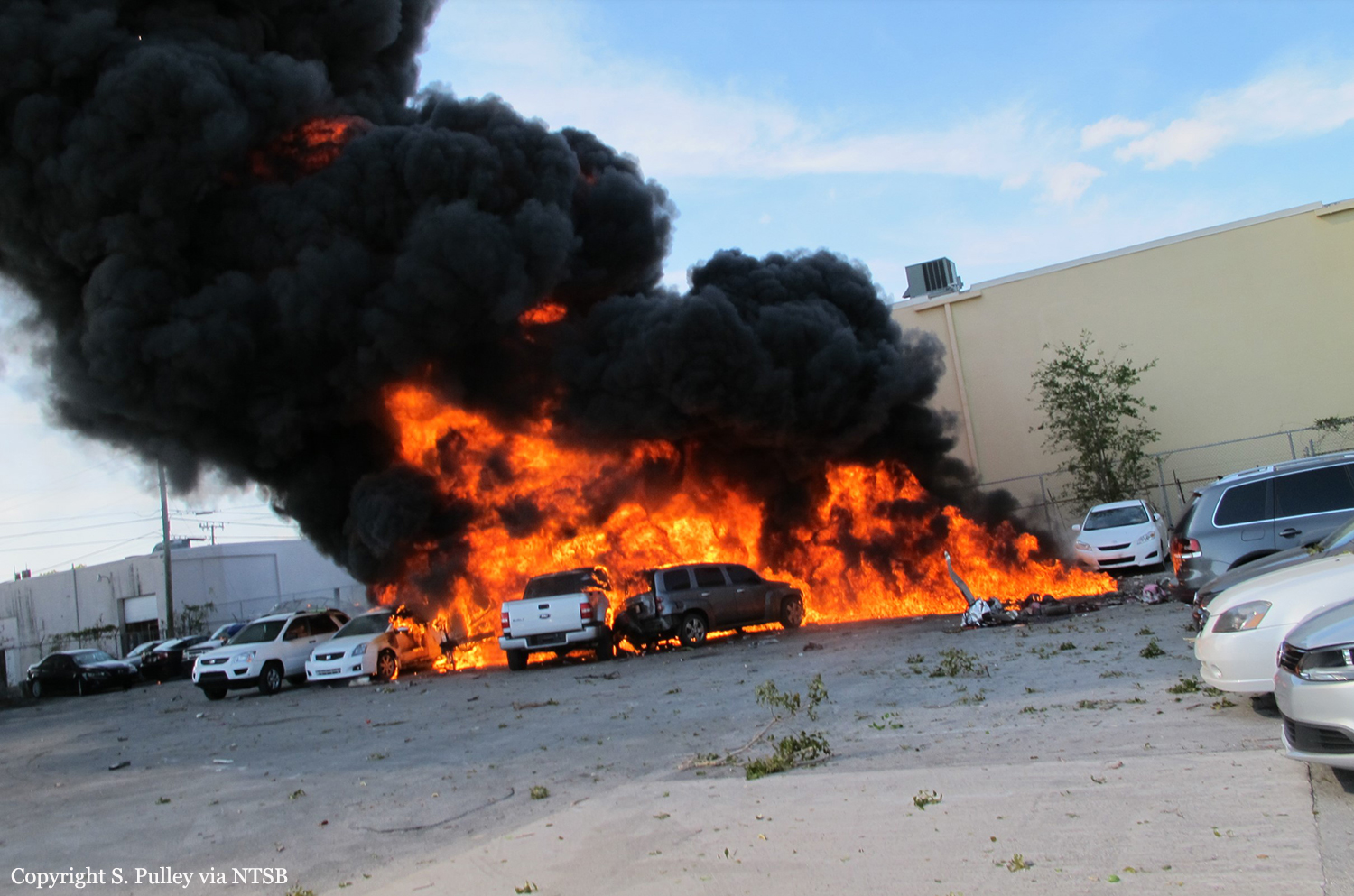
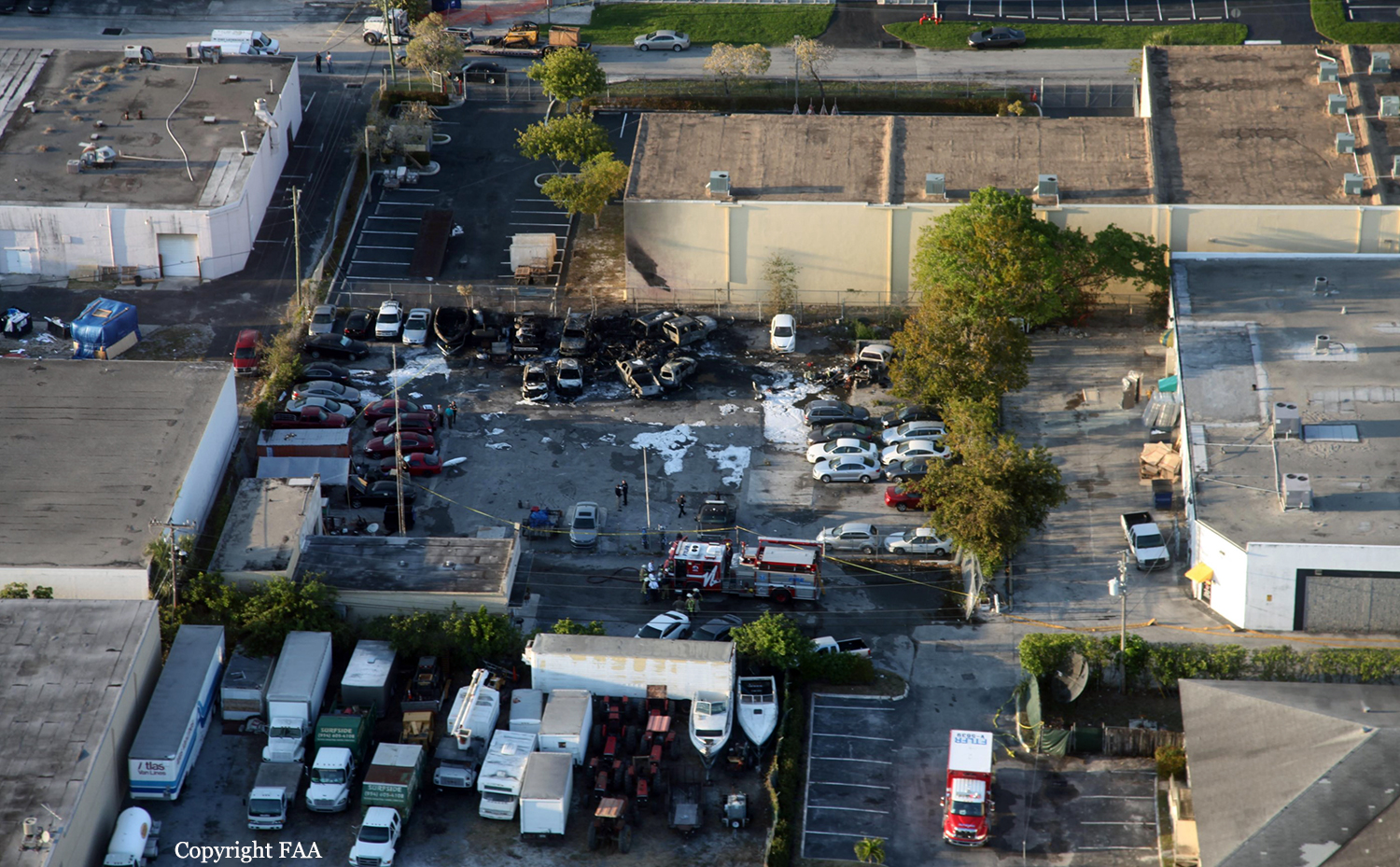
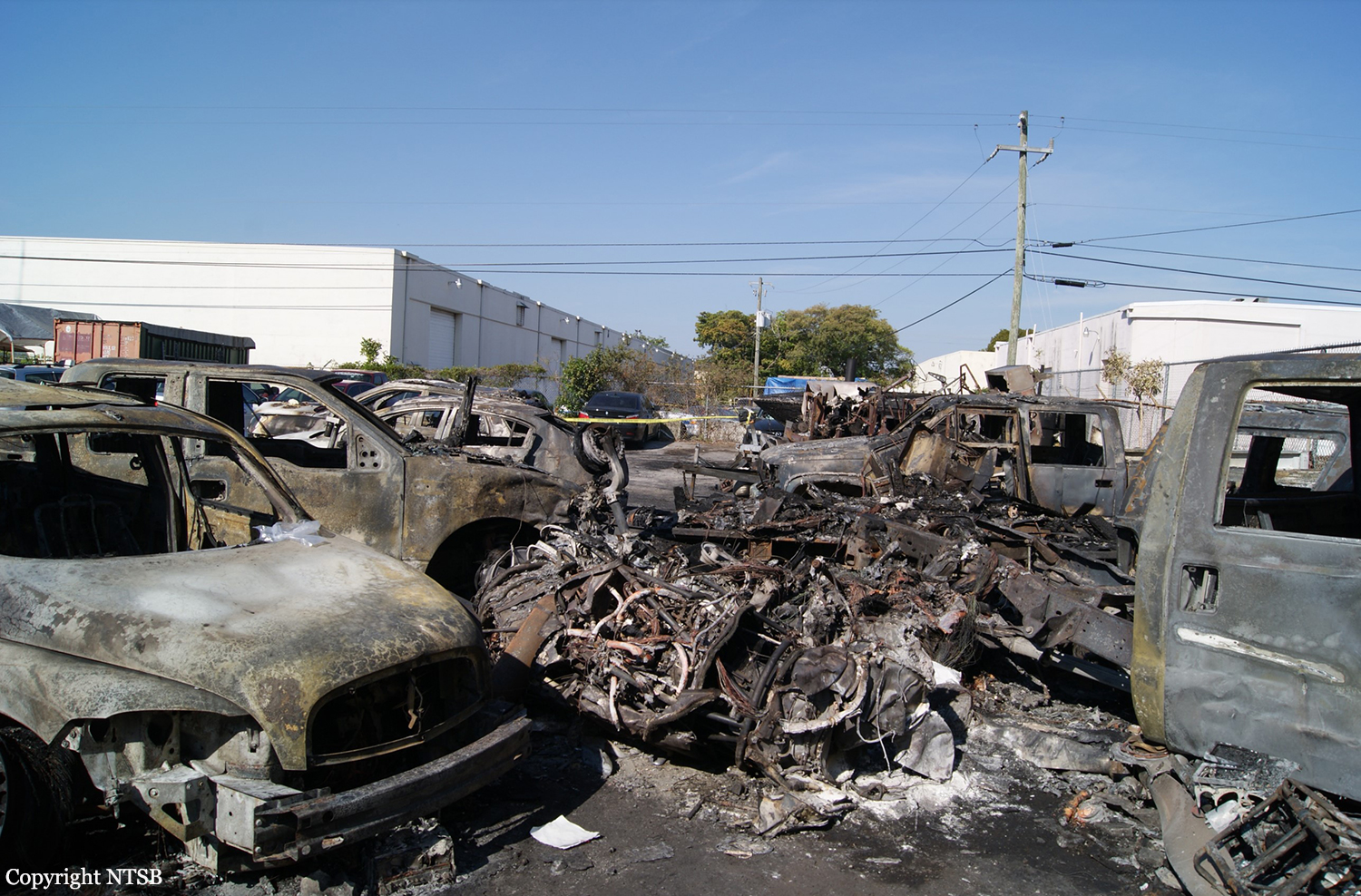
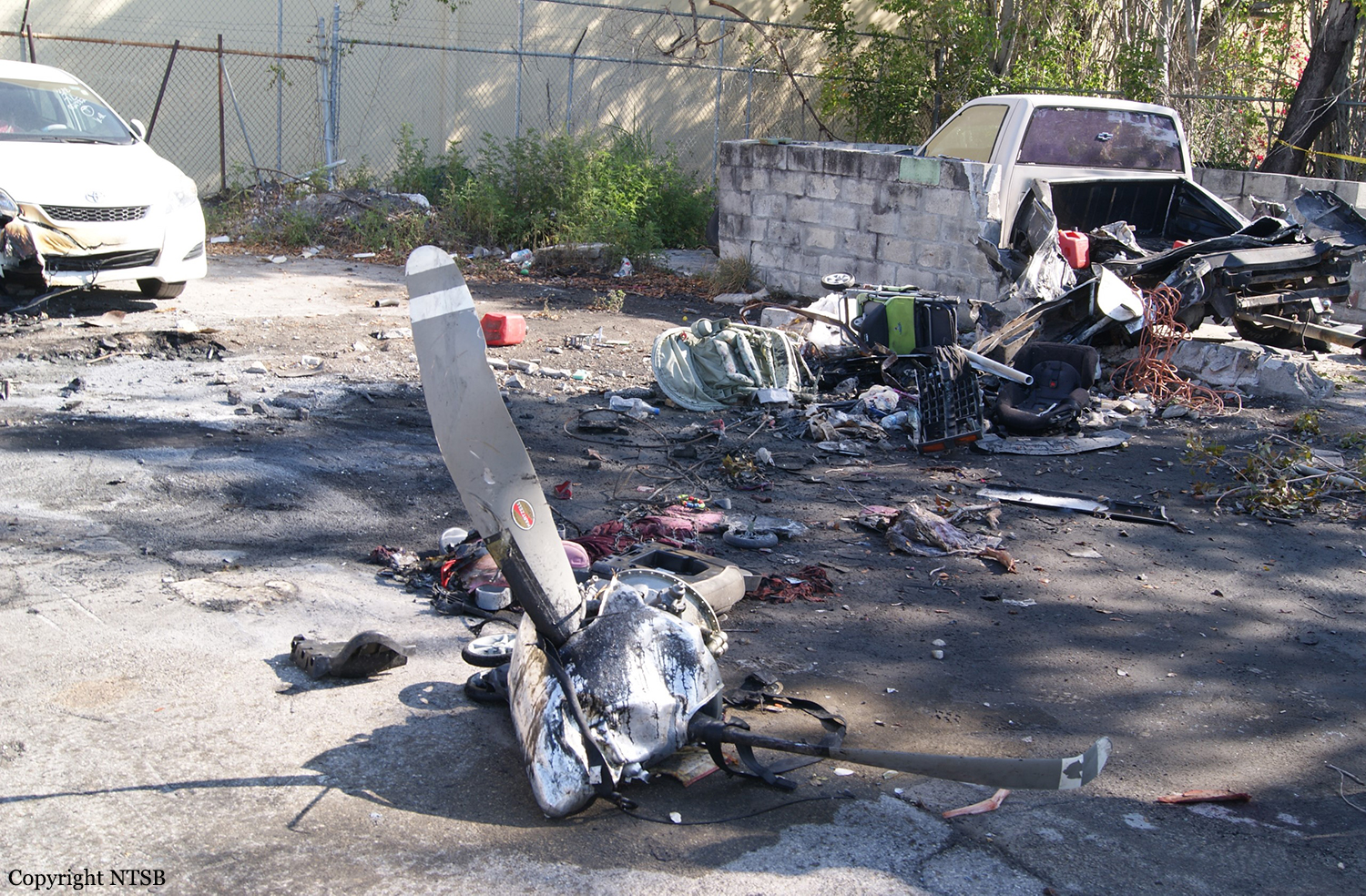
Crash of a Piper PA-31T1 Cheyenne I near Ely: 2 killed
Date & Time:
Dec 15, 2012 at 1000 LT
Registration:
N93CN
Survivors:
No
Schedule:
Mesa - Portland
MSN:
31-8004029
YOM:
1980
Crew on board:
1
Crew fatalities:
Pax on board:
1
Pax fatalities:
Other fatalities:
Total fatalities:
2
Aircraft flight hours:
5725
Circumstances:
The private pilot and passenger departed on the 875-nautical-mile cross-country flight and leveled off at a cruise altitude of 24,000 feet mean seal level, which, based on the radar data, was accomplished with the use of the autopilot. About 1 hour 40 minutes after departure, the pilot contacted air traffic control personnel to request that he would “like to leave frequency for a couple of minutes.” No further radio transmissions were made. About 20 seconds after the last transmission, the airplane banked to the right, continued in a spiral while rapidly descending, and subsequently broke apart. At no time during the flight did the pilot indicate that he was experiencing difficulty or request assistance. Just prior to departing from the flight path, the pilot made an entry of the engine parameters in a flight log, which appeared to be consistent with his other entries indicating the airplane was not experiencing any difficulties. Portions of the wings, along with the horizontal stabilizers and elevators, separated during the breakup sequence. Analysis of the fracture surfaces, along with the debris field distribution and radar data, revealed that the rapid descent resulted in an exceedance of the design stress limits of the airplane and led to an in-flight structural failure. The airplane sustained extensive damage after ground impact, and examination of the engine components and surviving primary airframe components did not reveal any mechanical malfunctions or failures that would have precluded normal operation. The airplane was flying on a flight path that the pilot was familiar with over largely unpopulated hilly terrain at the time of the upset. The clouds were well below his cruising altitude, giving the pilot reliable external visual cues should the airplane have experienced a failure of either the flight instruments or autopilot. Further, no turbulence was reported in the area. The airplane was equipped with a supplemental oxygen system, which the pilot likely had his mask plugged into and available in the unstowed position behind his seat; the passenger’s mask was stowed under her seat. The airplane’s autopilot could be disengaged by the pilot by depressing the appropriate mode switch, pushing the autopilot disengage switch on the control wheel, or turning off the autopilot switch on the control head. All autopilot servos were also equipped with a clutch mechanism that allowed the servo to be manually overridden by the pilot at any time. It is likely that the reason the pilot requested to “leave the frequency” was to leave his seat and attend to something in the airplane. While leaving his seat, it is plausible he inadvertently disconnected the autopilot and was unable to recover by the time he realized the deviation had occurred.
Probable cause:
The pilot’s failure to regain airplane control following a sudden rapid descent during cruise flight, which resulted in an exceedance of the design stress limits of the aircraft and led to an in-flight structural failure.
Final Report:
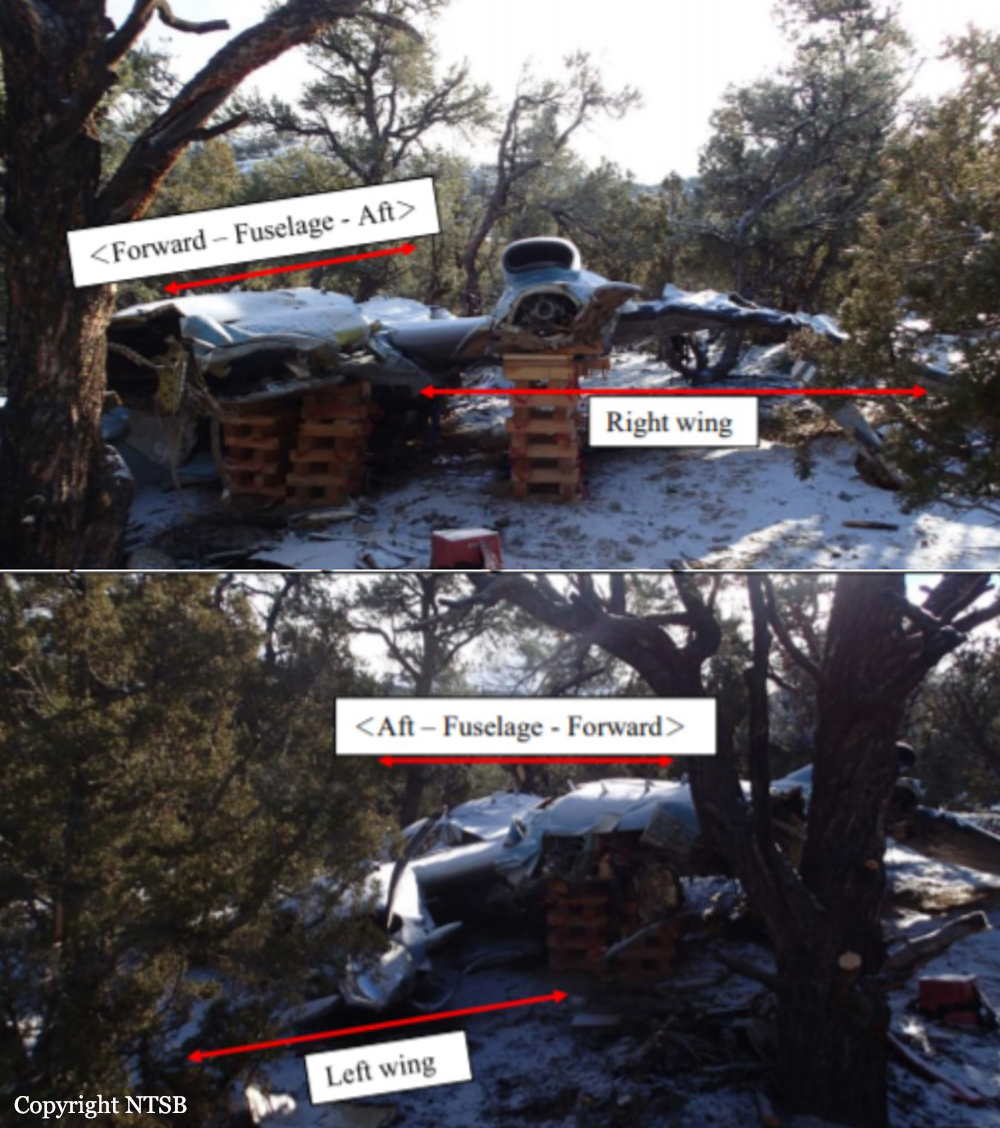
Crash of a Piper PA-31T2 Cheyenne II XL in Curitiba: 4 killed
Date & Time:
Nov 6, 2012 at 1725 LT
Registration:
PT-MFW
Survivors:
No
Schedule:
Dourados – Curitiba
MSN:
31-8166067
YOM:
1981
Crew on board:
2
Crew fatalities:
Pax on board:
2
Pax fatalities:
Other fatalities:
Total fatalities:
4
Captain / Total hours on type:
618.00
Copilot / Total hours on type:
16
Circumstances:
The twin engine aircraft departed Dourados-Francisco de Matos Pereira Airport on an on-demand flight to Curitiba, carrying two passengers, two pilots and a load consisting of valuables. On final approach to Curitiba-Bacacheri Airport, both engines failed simultaneously. The crew attempted an emergency landing when the aircraft crashed in a field and came to rest near trees. A passenger was seriously injured while three other occupants were killed. The following day, the only survivor died from his injuries.
Probable cause:
The following findings were identified:
- Fatigue is likely to have occurred, since there are reports of high workload, capable of affecting the perception, judgment, and decision making of the crew.
- In view of the fact that the captain displayed an attitude of gratefulness toward the company which hired him, working for consecutive hours and many times more than was prescribed for his daily routine, it is possible that such high motivation may have been present in the accident flight, harming his capacity to evaluate the conditions required for a safe flight.
- The crew neither gathered nor properly evaluated the available pieces of information for the correct refueling of the aircraft, something that led to their decision of not refueling the aircraft in SBDO.
- The company crews did not usually keep fuel records, and made approximate calculations based on the fuel remaining from previous flights, whose control parameters were not dependable. Such attitudes reflected a work-group culture that became apparent in this accident.
- The pilots were presumably undergoing a condition of stress on account of the company flight routine, in which they flew every day, with little time dedicated to rest or even holidays. Under such condition, the pilots may have had their cognitive processes affected, weakening their performance in flight.
- The flights had the objective of transporting valuables, causing concern in relation to security issues involving the aircraft on the ground. Thus, it is suspected that decisions made by the pilots may have been affected by this complexity, such as, for example, deciding not to refuel the aircraft on certain locations.
- The way the work was structured in the company was giving rise to overload due to the routine of many flights and few periods of rest or holidays. This situation may have affected the crew’s performance, interfering in the analysis of the conditions necessary for a safe flight.
- The company did not monitor the performance of its pilots for the identification of contingent deviations from standard procedures, such as non-compliance with the MGO.
- Failures in the application of operational norms, as well as in the communication between the crew members, may have occurred on account of inadequate management of tasks by each individual, such as, for example, the use of the checklist and the filling out of control forms relative to fuel consumption contained in the company MGO.
- The crew judged that the amount of fuel existing in the aircraft was sufficient for the flight in question.
- The fact that the fuel gauges were not indicating the correct quantity of fuel had direct influence on the flight outcome, since the planning factors and the pilots’ situational awareness were affected.
- The crew did not analyze appropriately the amount of fuel necessary for the flight leg between SBDO and SBBI. The Mission Order did not establish the minimum amount of fuel necessary for the flight legs, and the crew had to take responsibility for the decision.
- The company was not rigorous with the filling out of aircraft logbooks and cargo manifestos, resulting that it did not have control over the operational procedures performed by the crews, and this may have contributed to the aircraft taking off with an amount of fuel that was insufficient for the flight. Although the MGO had parameters established for calculating the endurance necessary for VFR/IFR flights, the company did not define the fuel necessary in the Mission Orders, transferring the responsibility for the decision to the aircraft captain.
- Fatigue is likely to have occurred, since there are reports of high workload, capable of affecting the perception, judgment, and decision making of the crew.
- In view of the fact that the captain displayed an attitude of gratefulness toward the company which hired him, working for consecutive hours and many times more than was prescribed for his daily routine, it is possible that such high motivation may have been present in the accident flight, harming his capacity to evaluate the conditions required for a safe flight.
- The crew neither gathered nor properly evaluated the available pieces of information for the correct refueling of the aircraft, something that led to their decision of not refueling the aircraft in SBDO.
- The company crews did not usually keep fuel records, and made approximate calculations based on the fuel remaining from previous flights, whose control parameters were not dependable. Such attitudes reflected a work-group culture that became apparent in this accident.
- The pilots were presumably undergoing a condition of stress on account of the company flight routine, in which they flew every day, with little time dedicated to rest or even holidays. Under such condition, the pilots may have had their cognitive processes affected, weakening their performance in flight.
- The flights had the objective of transporting valuables, causing concern in relation to security issues involving the aircraft on the ground. Thus, it is suspected that decisions made by the pilots may have been affected by this complexity, such as, for example, deciding not to refuel the aircraft on certain locations.
- The way the work was structured in the company was giving rise to overload due to the routine of many flights and few periods of rest or holidays. This situation may have affected the crew’s performance, interfering in the analysis of the conditions necessary for a safe flight.
- The company did not monitor the performance of its pilots for the identification of contingent deviations from standard procedures, such as non-compliance with the MGO.
- Failures in the application of operational norms, as well as in the communication between the crew members, may have occurred on account of inadequate management of tasks by each individual, such as, for example, the use of the checklist and the filling out of control forms relative to fuel consumption contained in the company MGO.
- The crew judged that the amount of fuel existing in the aircraft was sufficient for the flight in question.
- The fact that the fuel gauges were not indicating the correct quantity of fuel had direct influence on the flight outcome, since the planning factors and the pilots’ situational awareness were affected.
- The crew did not analyze appropriately the amount of fuel necessary for the flight leg between SBDO and SBBI. The Mission Order did not establish the minimum amount of fuel necessary for the flight legs, and the crew had to take responsibility for the decision.
- The company was not rigorous with the filling out of aircraft logbooks and cargo manifestos, resulting that it did not have control over the operational procedures performed by the crews, and this may have contributed to the aircraft taking off with an amount of fuel that was insufficient for the flight. Although the MGO had parameters established for calculating the endurance necessary for VFR/IFR flights, the company did not define the fuel necessary in the Mission Orders, transferring the responsibility for the decision to the aircraft captain.
Final Report:
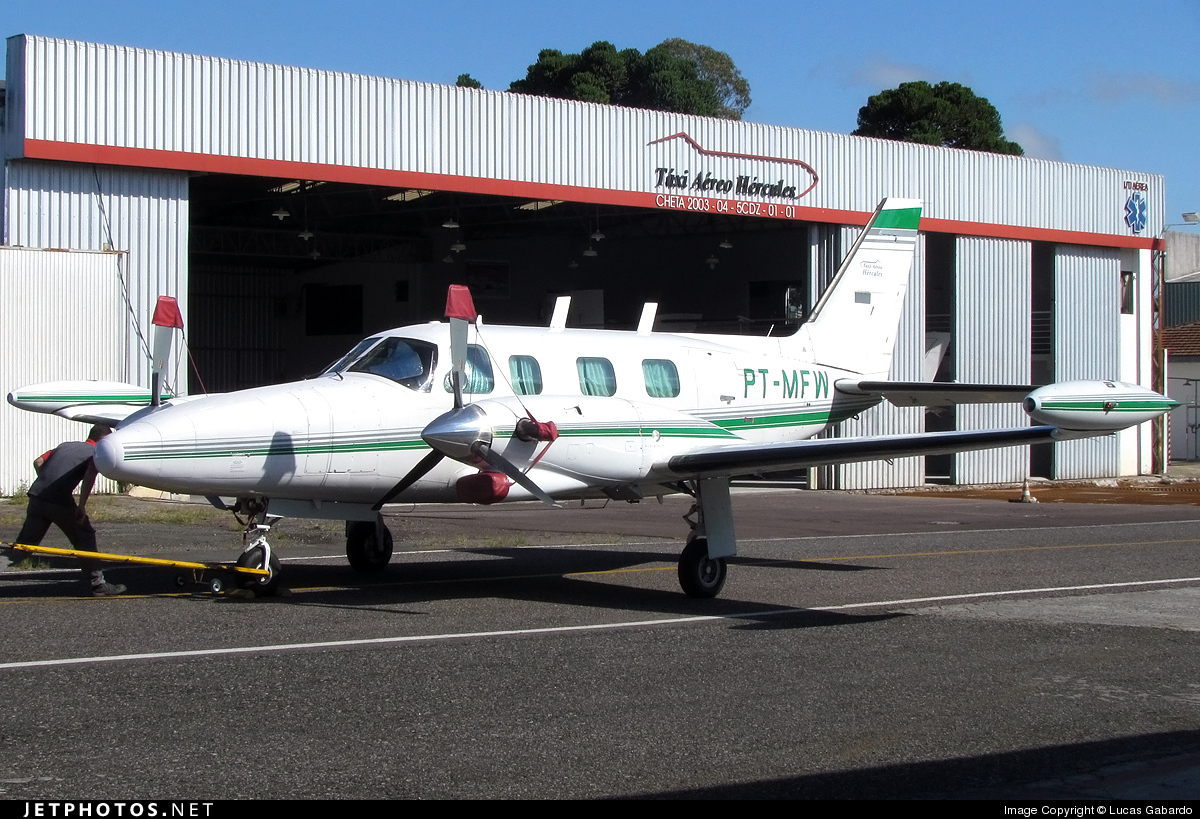
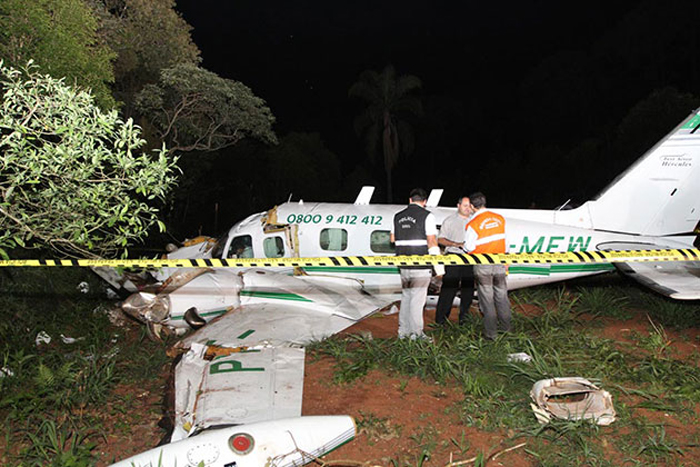
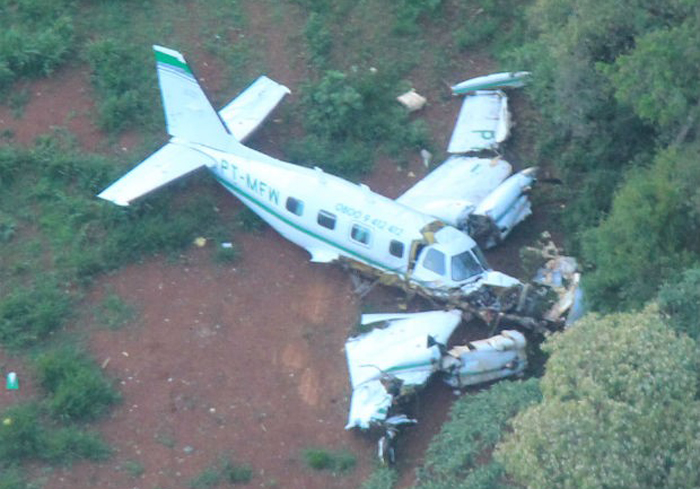
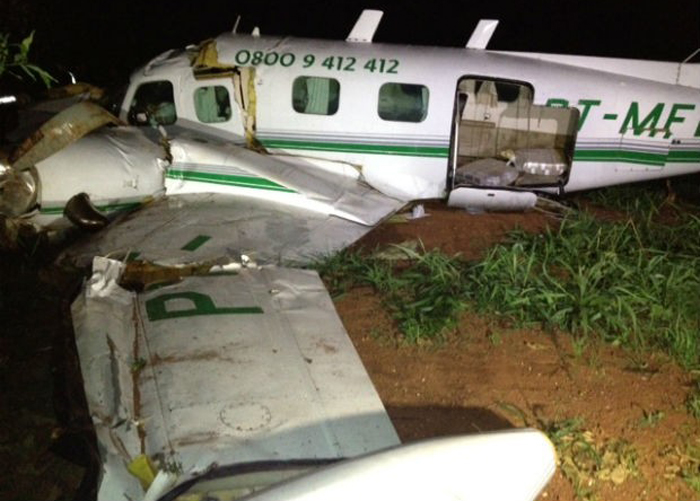
Crash of a Piper PA-31T Cheyenne II near Catacamas: 1 killed
Date & Time:
Jul 3, 2012
Registration:
PT-OFH
Survivors:
Yes
MSN:
31-7920034
YOM:
1979
Crew on board:
2
Crew fatalities:
Pax on board:
0
Pax fatalities:
Other fatalities:
Total fatalities:
1
Circumstances:
The twin engine aircraft was engaged in an illegal flight, carrying two pilots and a load consisting of 600 kilos of cocaine. After being tracked by the Honduran Police, the crew apparently attempted an emergency landing when the aircraft crashed. While the copilot was injured, the captain was killed.




